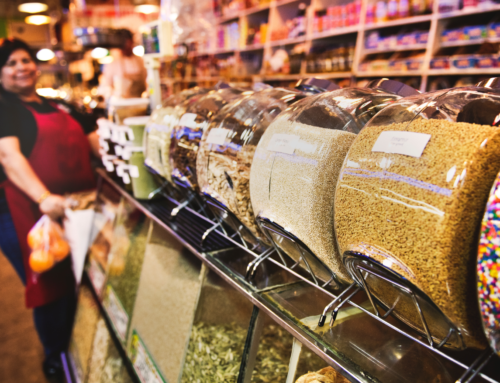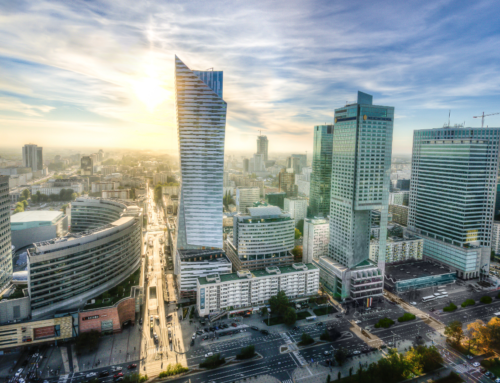By Adam Zdrodowski
Source: Warsaw Business Journal, Number 11/12 (49), November/December 2018

The restaurant areas of shopping centers around the world have been expanding in recent years. The latest developments in Poland’s malls increasingly reflect the global trend.
Shopping center owner, manager and developer Atrium Group last month opened a new restaurant area at its Atrium Promenada mall in Warsaw, which is one of the company’s flagship assets in Poland. Called Republika Smaku (the Republic of Taste) and accommodated in a newly completed section of the center, which has gone through a major modernization and extension process, the food court houses 11 popular restaurants featuring complementary menus.
A number of ongoing shopping center modernization and extension projects across Poland will also involve the development of additional dining space, with mall owners increasingly paying attention to and seeing value in having a quality restaurant offering. A properly chosen mix of restaurants generates bigger footfall and increases the time that visitors spend in a shopping center. It also increases the amount of money that those visitors will spend in the mall, argued Joanna Tomczyk, an analyst at JLL.
Global trend
The ongoing expansion of restaurant areas in shopping centers is a global phenomenon. According to a recent report by JLL, by 2025 tenants from the food and beverage sector could account for as much as 20 percent of the total leasable space in malls across Europe. Changing trends in the retail property market, including an increased focus on so-called “shopping experience,” have led the share of restaurants in the aggregate GLA of shopping centers around the world to grow in recent years. This has been happening in Poland, too.
JLL data show that the food and beverage sector currently accounts for 12.5 percent of the GLA in major shopping centers in the Tri-City, while in Łódź, Kraków, the Silesia agglomeration and Warsaw the figure stands at 7.5 percent, 6.8 percent, 6.8 percent and 6.6 percent respectively (see graph). Poles are eating out more and more often. According to the country’s government agency Statistics Poland (GUS), restaurant and hotel services now account for 4.6 percent of households’ expenditures, up from 1.8 percent in 2005.
Gastronomic evolution

Magdalena Sadal, head of retail research and advisory at Cresa Poland, noted that in the more than 20-year history of modern retail property market in Poland, the restaurant areas of shopping centers have – just like other parts of malls – undergone a radical transformation. The country’s first grocery hypermarket-anchored centers featured few gastronomic establishments which typically occupied some 3-5 percent of those centers’ retail areas. Then the classic food court area housing several chain fast food restaurants emerged.
It was located in the center (in single-floor malls) or on the top floor (in multi-story malls) of the building and took up even 10 percent of the GLA. Over time, the importance of this component of the tenant mix continued to grow. Today, in new shopping center projects and in existing malls that get modernized or/and expanded, the share of restaurant areas in the total leasable area amounts to more than 10 percent to even 20 percent. Food courts accommodate more than ten tenants.
They are surrounded by regular restaurants and the latest gastronomic concepts. Apart from the dedicated restaurant areas, modern shopping centers also feature single smaller establishments such as ice cream parlors and cafes that are distributed across all the malls’ floors. In dominant shopping centers, the number of tenants from the food and beverage sector amounts to 30-40, which accounts for about 12-16 percent of the total number of tenants, Sadal said. In Galeria Młociny in Warsaw, 50 gastronomic establishments have been planned.
Interestingly, shopping centers are increasingly becoming places where foreign brands and concepts debut in Poland, Sadal pointed out. A number of such openings – including Max Premium Burgers, Blue Frog and Black Real Burgers – have taken place in the last two years. Japanese restaurant chain Menya Musashi will soon open its first two Polish locations in Warsaw’s Blue City and in Forum Gdańsk. As the country’s malls offer more and more restaurant space, other newcomers may be tempted to make similar debuts in the near future.
Growth prospects

The size and type of the restaurant offering of a given shopping center depends on the mall’s specific nature and location. Centers located in downtown areas and close to office buildings, for example, often offer more sophisticated cuisine as their visitors include businesspeople. In general, more and more non-chain restaurant concepts are appearing in shopping malls in response to the expectations of clients looking for original ideas, for instance those featuring vegetarian and vegan cuisine, said Mariusz Majkowski, head of retail leasing at CBRE.
Apart from shopping centers, food services are also becoming increasingly available in other retail formats. Retail parks usually include stand-alone buildings housing restaurants of popular fast-food chains. Food trucks, too, can be seen in such locations more and more often. Beside their single restaurants, ice cream parlors and cafes, some outlet centers now also feature small food courts. Admittedly, the growth of dining areas in such schemes has its limitations as they are mainly visited at weekends.
Meanwhile, a new retail format has emerged in the market in which gastronomy is the dominant function. Such projects are usually located in historic properties in downtown areas with examples including Hala Koszyki in Warsaw. They predominantly house non-chain restaurants that have already been around in the given region for some time as well as restaurants whose offer is targeted at clients looking for a particular cuisine or dish, Majkowski said. Often, one can also shop for bio products there.
Real estate experts predict that the expansion of dining areas in shopping centers and other retail formats will continue. According to CBRE’s “Shopping Center 4.0” report published last year, every fourth visitor sees a restaurant offering as an important feature of a mall. The development of food services is part of the most spectacular trend in the retail market – the drive towards “convenience.” Such services will naturally follow clients to the places where they spend the most time, including to where they do their shopping, Sadal maintained.
Glossary
- devour – pożerać
- flagship assets – główne aktywa
- food court – strefa restauracyjna
- complementary – uzupełniający (się)
- footfall – tutaj: odwiedzalność, liczba odwiedzających
- tenant – najemca
- to led the share – mieć największy udział
- aggregate GLA (gains or losses) – łączne zyski lub straty
- to account for – stanowić
- grocery hypermarket-anchored center – centrum handlowe, którego głównym najemcą jest hipermarket spożywczy
- chain – restaurant chain = sieć restauracji, chain restaurant = restauracja sieciowa
- leasable – przeznaczony na wynajem
- to accommodate – mieścić
- retail park – park handlowy
- ice cream parlor – lodziarnia
- admittedly – wprawdzie
- targeted at – skierowany na












